WHAT WILL THE BATHROOM SPACE OF THE FUTURE LOOK LIKE? FIND OUT FROM THE FOUR WINNERS’ DESIGNS IN AMERICAN STANDARD DESIGN AWARD (ASDA) 2022 IN TWO CATEGORIES: RESIDENTIAL BATHROOM SPACE DESIGN AND HOSPITALITY BATHROOM SPACE DESIGN
TEXT: PRATCHAYAPOL LERTWICHA
PHOTO: DON AMATAYAKUL EXCEPT AS NOTED
(For Thai, press here)
The pandemic has brought significant changes to the lives of human beings arounthe-art-of-thai-comics-a-century-of-strips-and-stripesd the world. Not only has it affected the way we live by introducing adaptations such as remote working or learning, but also our mindsets and views of the world. People are paying more attention to their health and relationship with nature, something that has been missing especially from the lifestyle of urban inhabitants.
Having realized such a shift in people’s way of life and thinking, LIXIL, a pioneer of water and housing products, invites new-generation designers to contemplate and envision the ‘bathroom space’ of the future with American Standard Design Award 2022 or ASDA, the project that welcomes students and young and passionate designers to showcase ideas for bathroom space design.

Teeragiat Sukyoo (Left) and Somyos Winagnkhamfa (Right) l Photo: Don Amatayakul
“American Standard focuses on creating purposeful design. We believe that together with young designers, we will be able to look at creative innovative bathroom designs because they are the future generations of designers” Audrey Yeo – Leader, LIXIL (Thailand)

Audrey Yeo – Leader, Thailand, LWT APAC – LIXIL Asia l Photo: Don Amatayakul
ASDA 2022 divides the competition into two categories; Residential Bathroom Space Design and Hospitality Bathroom Space Design. The submitted entries in both categories are separated into works from ‘Students’ and ‘Design Professionals and Practitioners’. The winners in the Student group in both categories will be competing in the regional Asia Pacific competition. After an intense selection process carried out by a panel of experienced and talented judges, the project announces the winners with works from Thai students among the designs that caught the eye of the judges of the Asia Pacific competition.
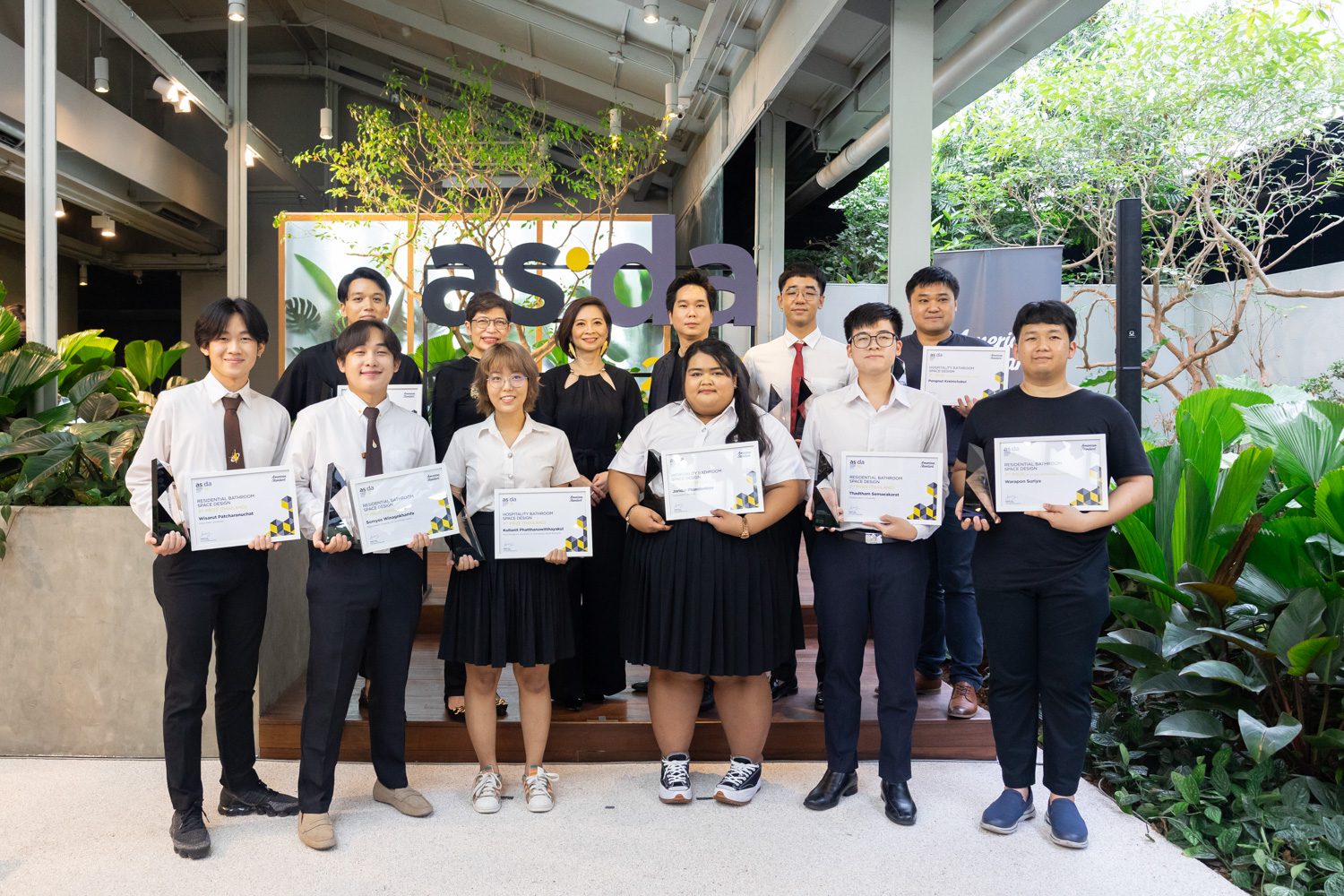
Photo: Don Amatayakul
‘Passive Cleaned Toilet The most cleaned toilet‘
The winner of the Hospitality Bathroom Space Design (Students) : Teeragiat Sukyoo

Passive Cleaned Toilet The most cleaned toilet by Teeragiat Sukyoo l Photo courtesy of ASDA 2022
A bathroom is the space where a person gets rid of their bodily waste and cleans themselves, naturally making it one of the dirtiest rooms of a house. As the New Normal Era heightens people’s awareness in the importance of hygiene, Teeragiat Sukyoo, a senior design student from Assumption University, acknowledges such a tendency, and develops a design for a hotel restroom that focuses on hygiene and cleanliness. His design also involves the idea of a bathroom space that can clean itself without having to rely solely on external human assistance.
“People use bathroom spaces differently. Some don’t think too much about hygiene, and my idea is that if we want to lessen the amount of dirtiness, the space should be designed to be self-cleaned,” Teeragiat explains the design concept of his work.

Teeragiat Sukyoo l Photo: Don Amatayakul
The floorplan is developed according to the frequency of how each component is used. The washbasin is placed near the entrance to allow users easy access. Further inside sits the toilet and shower room with a glass wall covered with a copper film to prevent the spread of microorganisms when the toilet is flushed and shower is used. The copper film’s physical attributes help reduce the microbial contamination on the shower’s surface. The bath is situated next to the window to enhance the user’s spatial experience with the glass that can be adjusted to have a translucent surface to provide the needed privacy.

Passive Cleaned Toilet The most cleaned toilet by Teeragiat Sukyoo l Photo courtesy of ASDA 2022

Passive Cleaned Toilet The most cleaned toilet by Teeragiat Sukyoo l Photo courtesy of ASDA 2022
Not only that, Teeragiat incorporates several miscellaneous details into his design, from the use of white color, not only for the clean look and feel it offers, but for the ability to disperse light and keep the space thoroughly lit despite having minimal openings, to the deliberate use of large tiles to reduce the surface of grout lines in order to lessen microbial growth and accumulation. Transparent and reflective materials are brought in for they can help the space look less confined while warm lighting is localized around the edges of the materials, preventing the light from disturbing users’ visual perception. Installed at the sink is the pre-filtration system, which allows the waste water to be reused such as for watering plants, maximizing the use of resources and resonating with the current environmental problems. With all the carefully thought of details, it comes to no surprise why the work caught the attention of the Asia Pacific competition’s judging panel and has eventually been chosen as the Asia Pacific Grand Prize Winner.
‘Term Tem’
The winner of Residential Bathroom Space Design (Students) : Somyos Winagnkhamfa
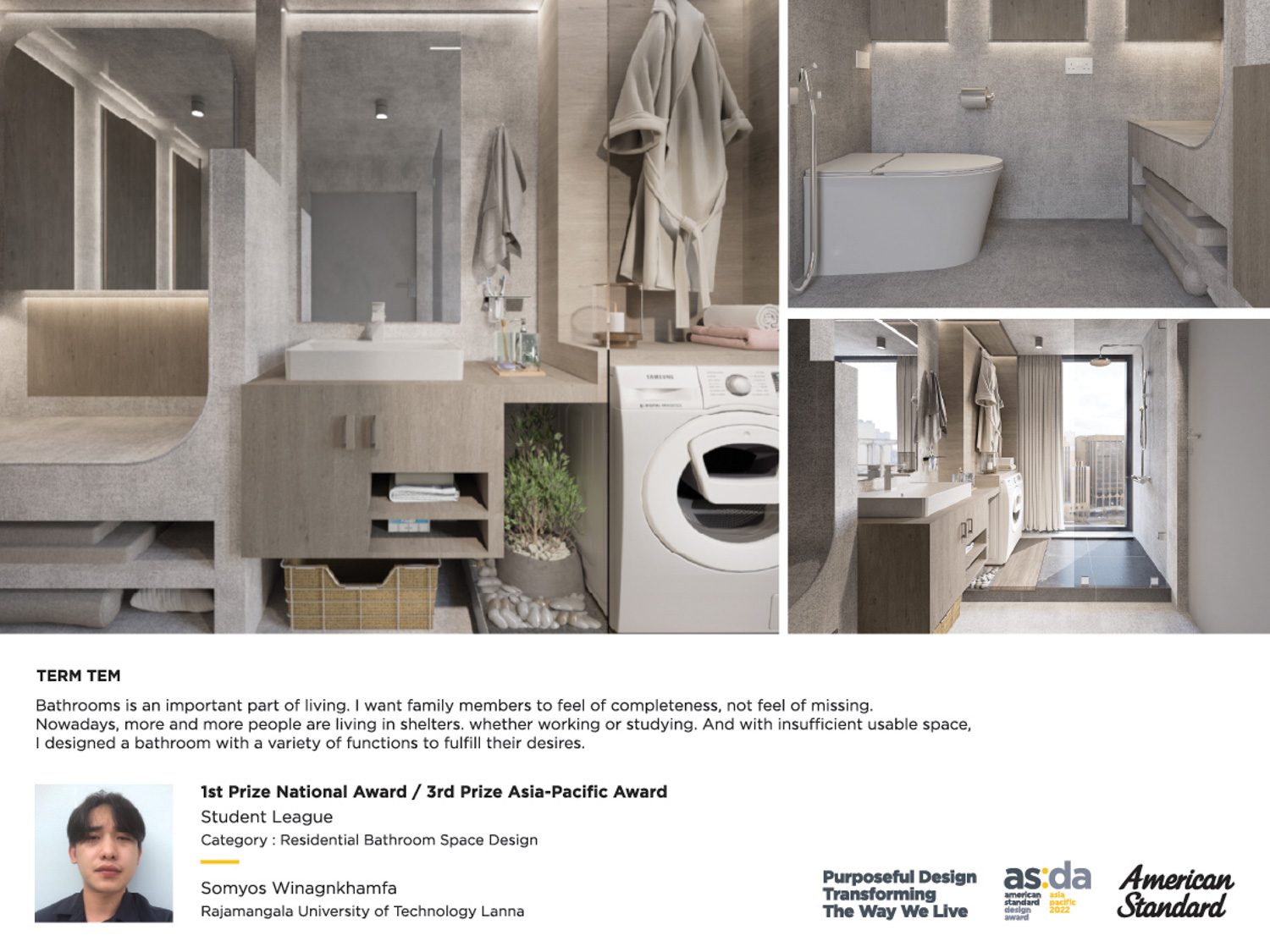
Term Tem by Somyos Winagnkhamfa l Photo courtesy of ASDA 2022
“During Covid-19, I shared a dorm room with my roommates and when there were so many people living together, there were diverse demands for the functional space despite its relatively small size. I thought about it and had this idea of turning a bathroom into a living space, by giving it other functions to meet users’ multiple functional requirements,” Somyos Winagnkhamfa reveals the starting point of his bathroom space design that ended up creating a restroom of a confined living space into something that is more than just an area where one showers or uses the toilet, but rather a space that offers several functional fulfilments.
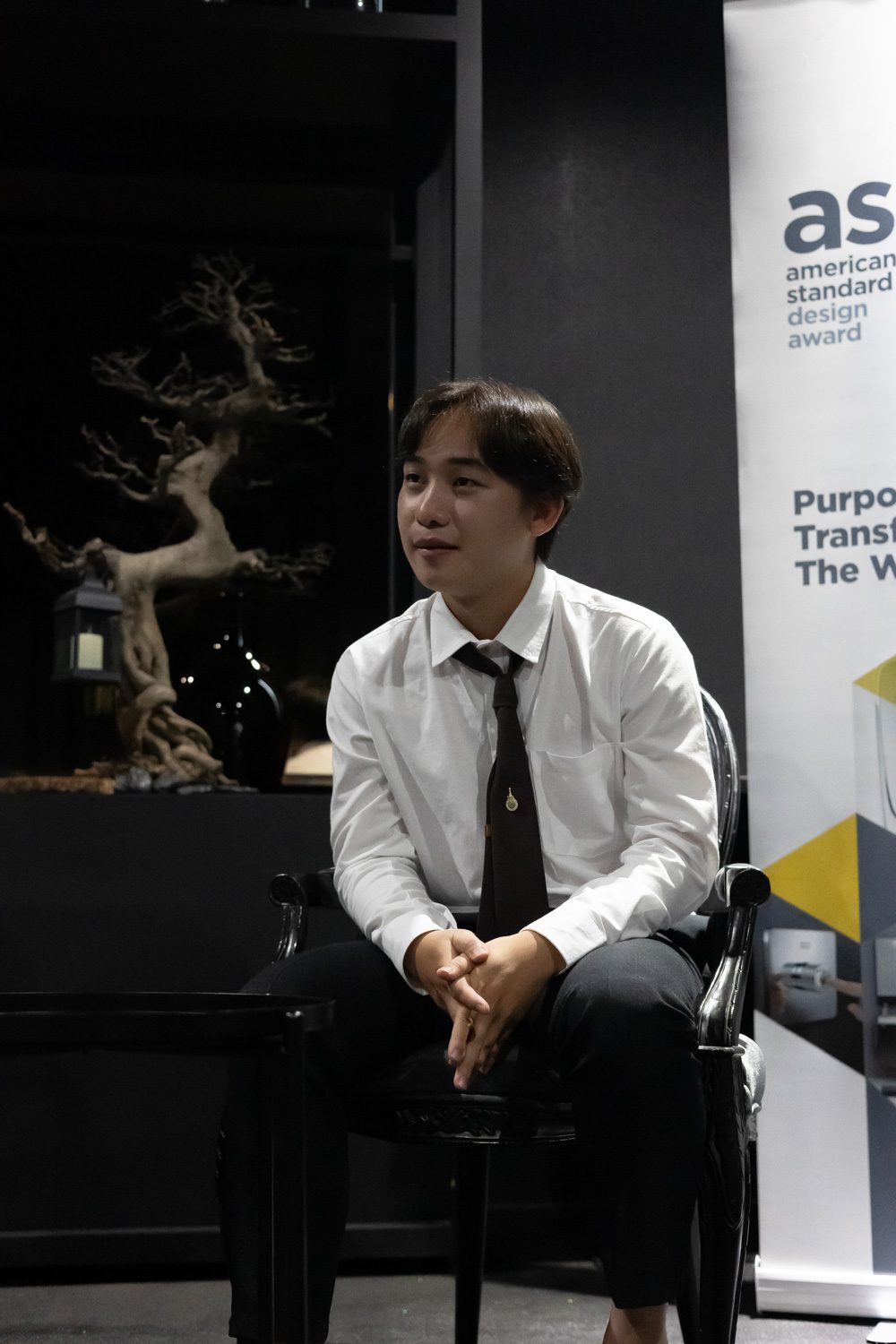
Somyos Winagnkhamfa l Photo: Don Amatayakul
The bathroom he designs is divided into two main parts; the dry zone (the toilet area) and the wet zone (the hand washing and showering zone). Each zone is designed to have additional functions, for instance, installed near the toilet is a wall-mounted wooden panel that can be folded down and used as a shelf, turning the area into a functional workspace. The opposite side is where a lounging area is located with a hidden television screen and another foldable wooden wall with an additional functionality of a vanity table.
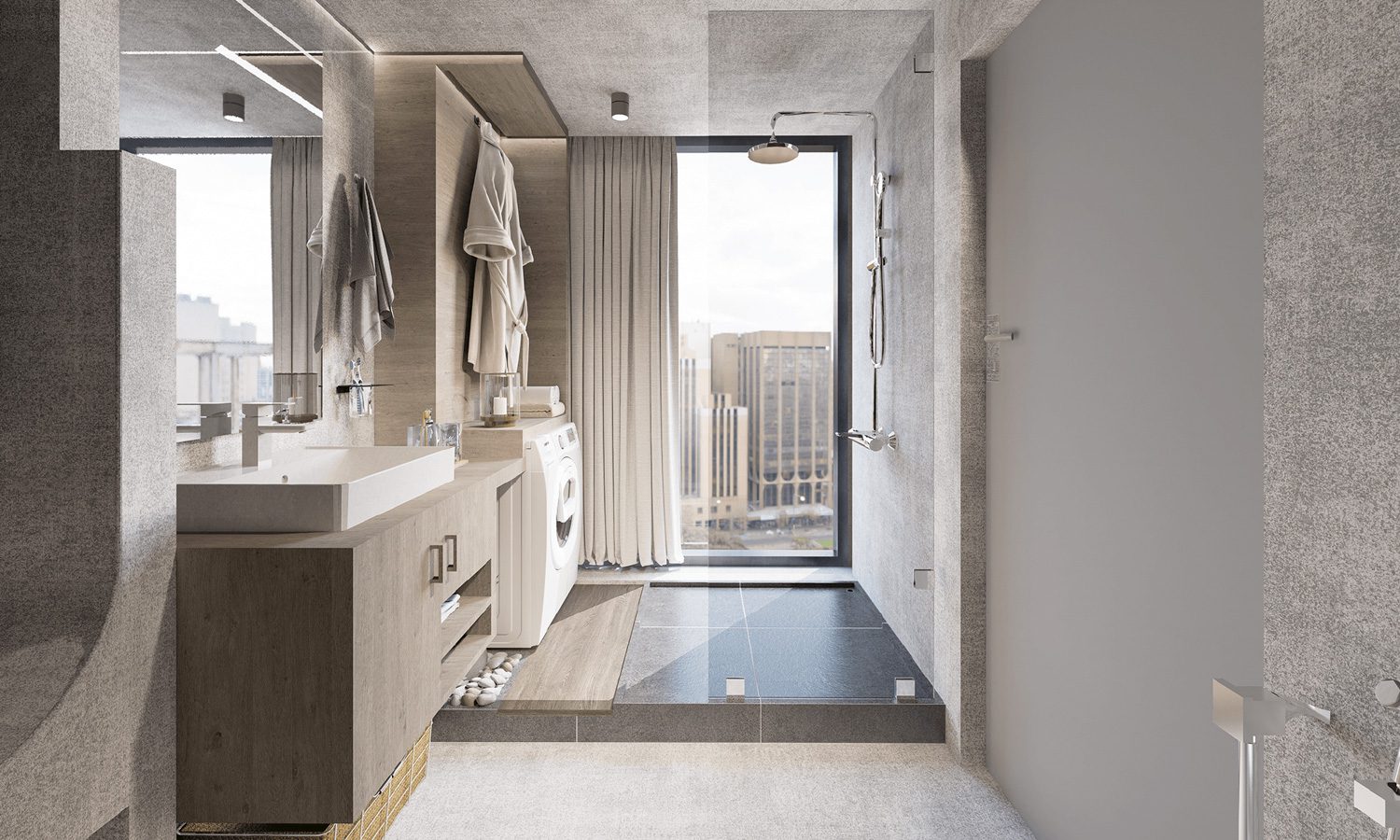
Term Tem by Somyos Winagnkhamfa l Photo courtesy of ASDA 2022
For the wet zone, Somyos adds a washing machine, with a rack for hanging clothes and an overhead shelf more comprehensive functions. Artificial trees are added as a decoration for a more relaxing mood.
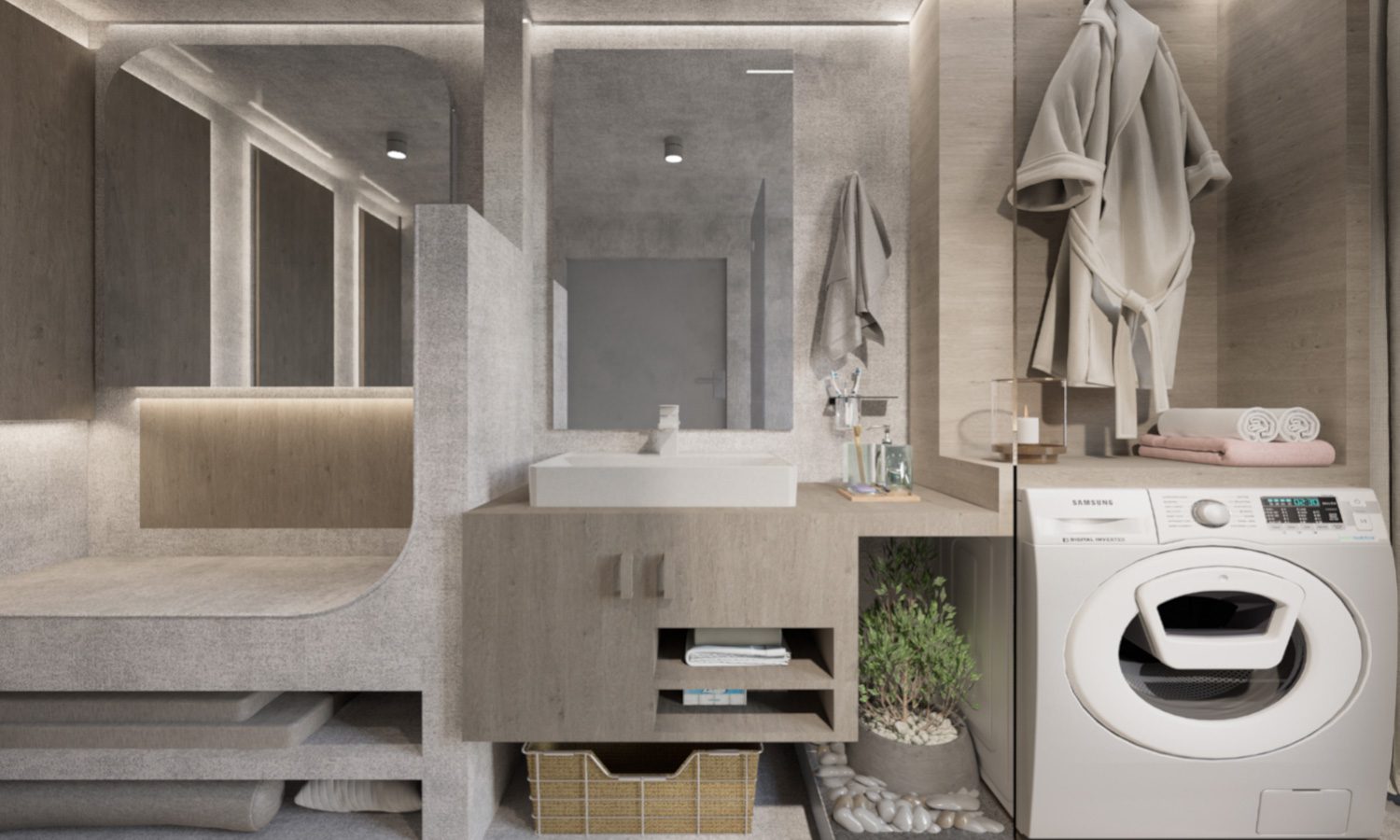
Term Tem by Somyos Winagnkhamfa l Photo courtesy of ASDA 2022
Somyos chooses a warm color palette with slightly different contrast between the tones to create a comfortable and soothing ambiance. The way the colors blend and fuse make the small bathroom space seem bigger.
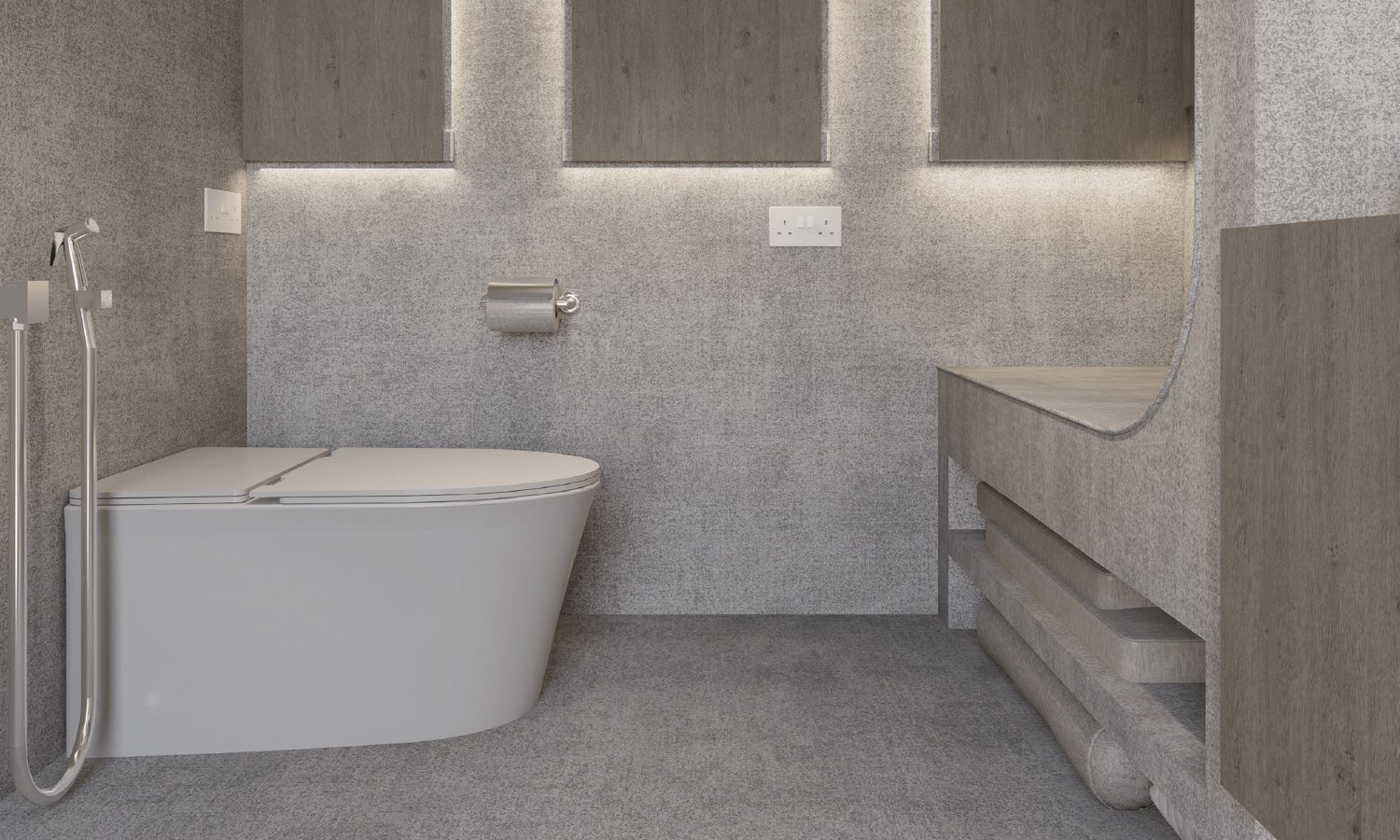
TERM TEM by Somyos Winagnkhamfa l Photo courtesy of ASDA 2022
“People haven’t really thought about a bathroom being a space one can work or relax in, but what I’m trying to propose through this design is even with such a limited space, several functional merits can be made and fulfill what is missing from people’s everyday life.
‘Let’s Nature In’
The Winner of Hospitality Bathroom Space Design (Design Professionals and Practitioners) : Peerapon Suthimakphol
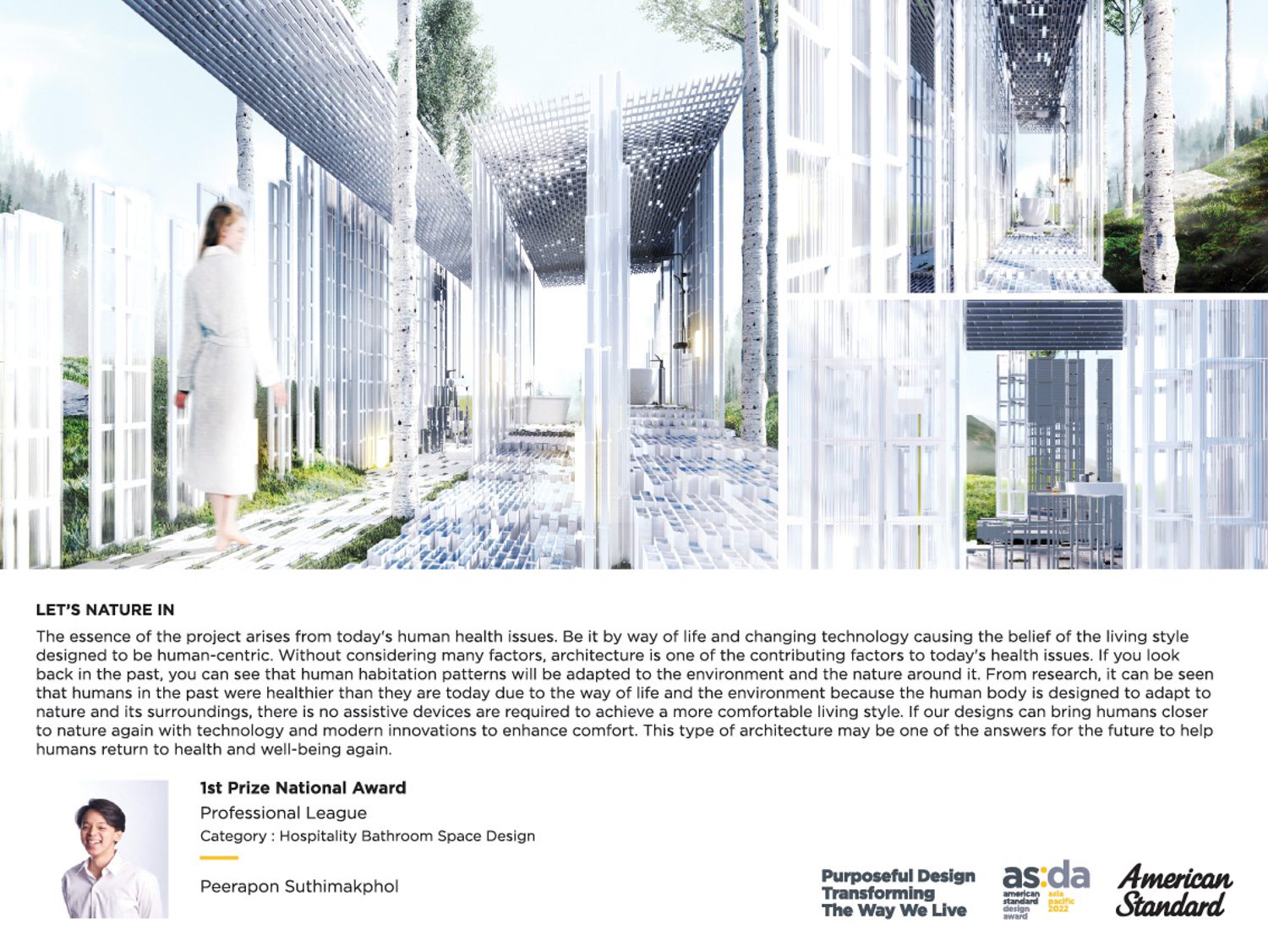
Let’s Nature In by Peerapon Suthimakphol l Photo courtesy of ASDA 2022
As the world evolves and develops, humans have found familiarity and even comfort in the living experience a small space inside a boxy structure can offer despite being completely isolated them from the outside world. It was as if we humans forgot how closely related to nature our lives used to be, when the sun, wind and rain were not something people try to alienate from their daily life. Peerapon Suthimakphol proposes his bathroom space design, ‘Let’s Nature In,’ to reconnect people’s relationship with nature.
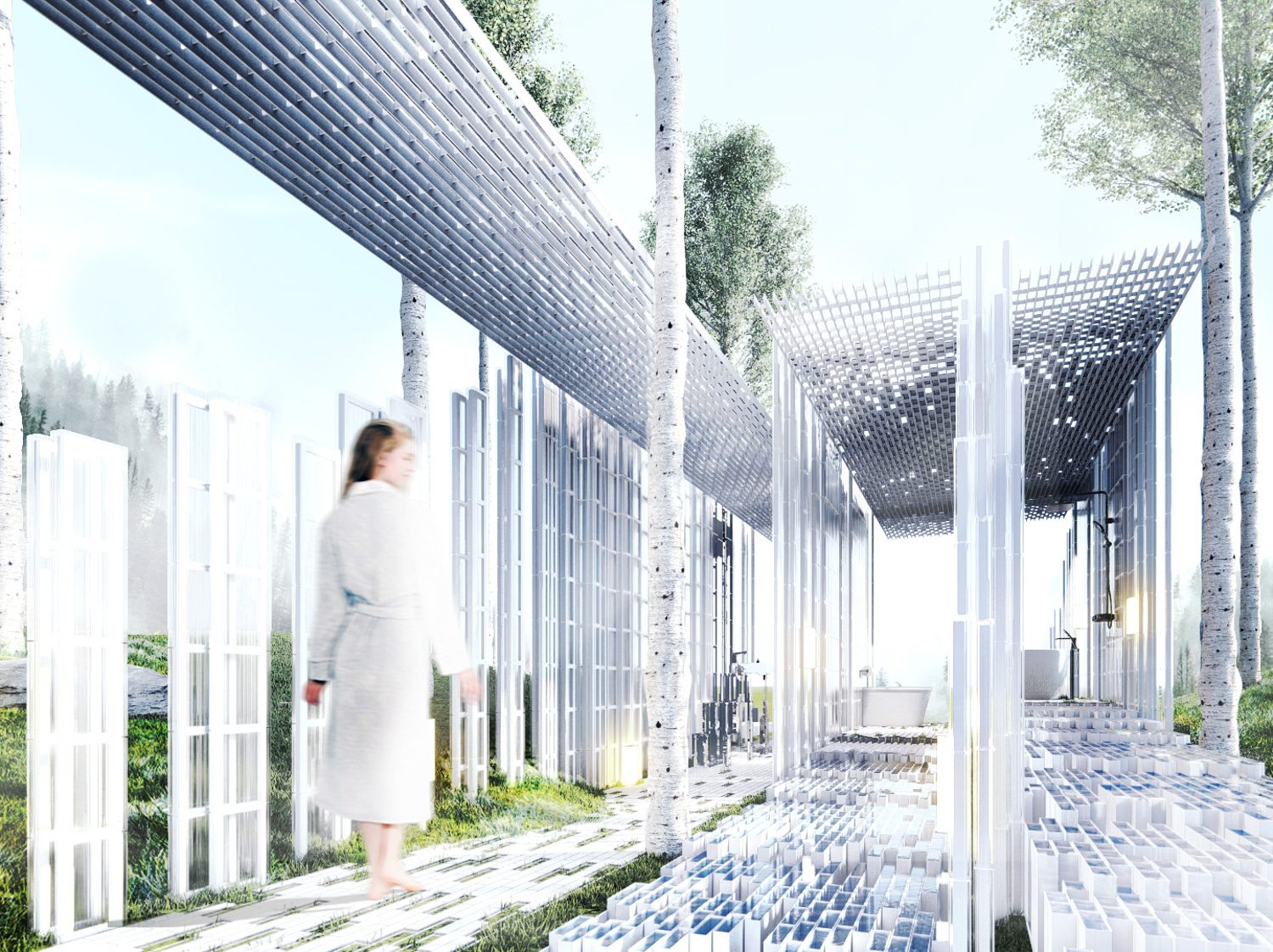
Let’s Nature In by Peerapon Suthimakphol l Photo courtesy of ASDA 2022
The bathroom space he designs is surrounded with the presence of nature. The open layout embraces natural elements alongside a calculated interval between enclosure and openness, corresponding with the order of functional spaces and facilitating dynamically changing perspectives of the outside view when a user moves to different parts of the bathroom. There are functional benefits to this particular part of the design, for instance, the way the solid wall behind the wash basin is intended to conceal the system works.
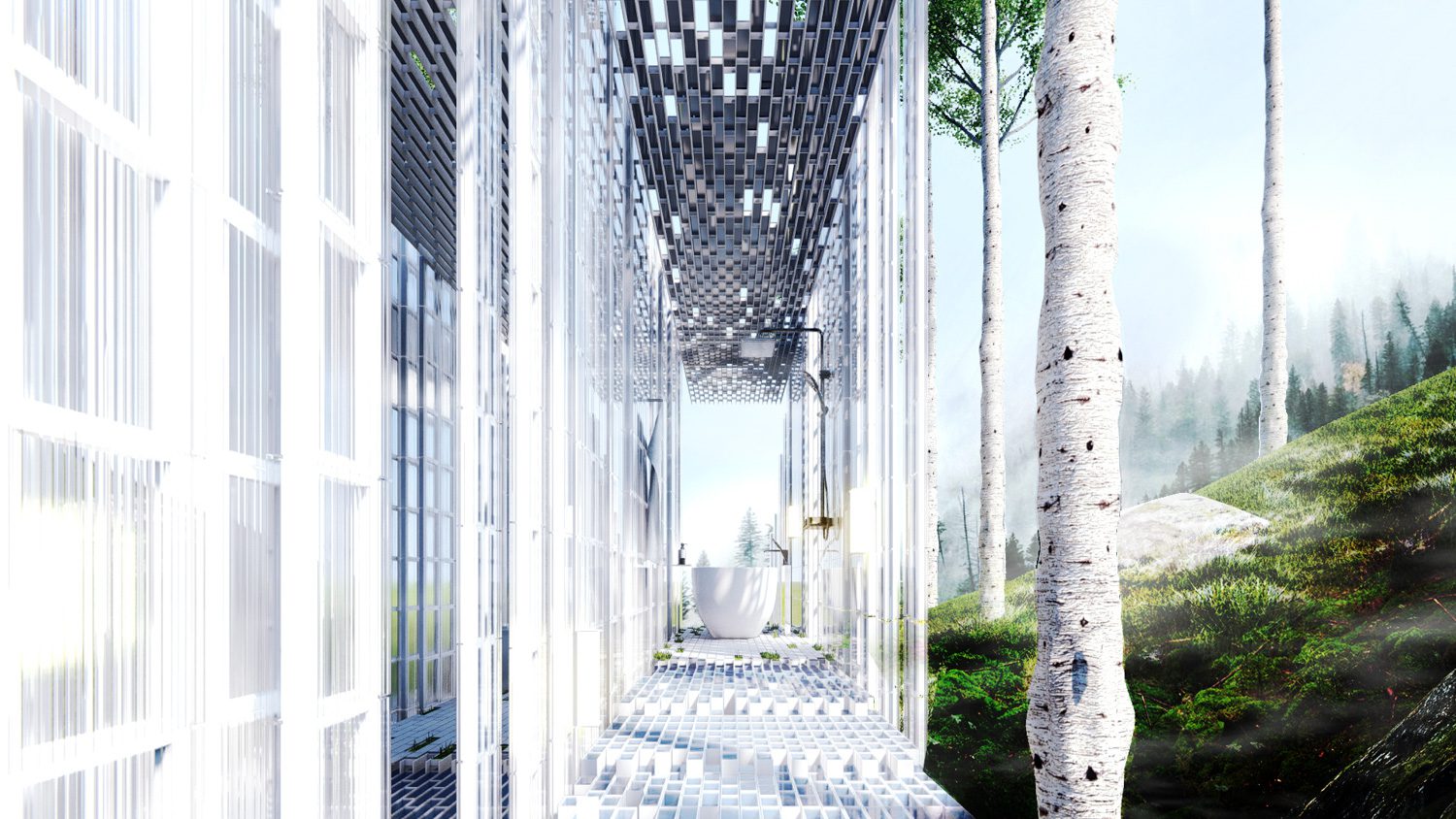
Let’s Nature In by Peerapon Suthimakphol l Photo courtesy of ASDA 2022
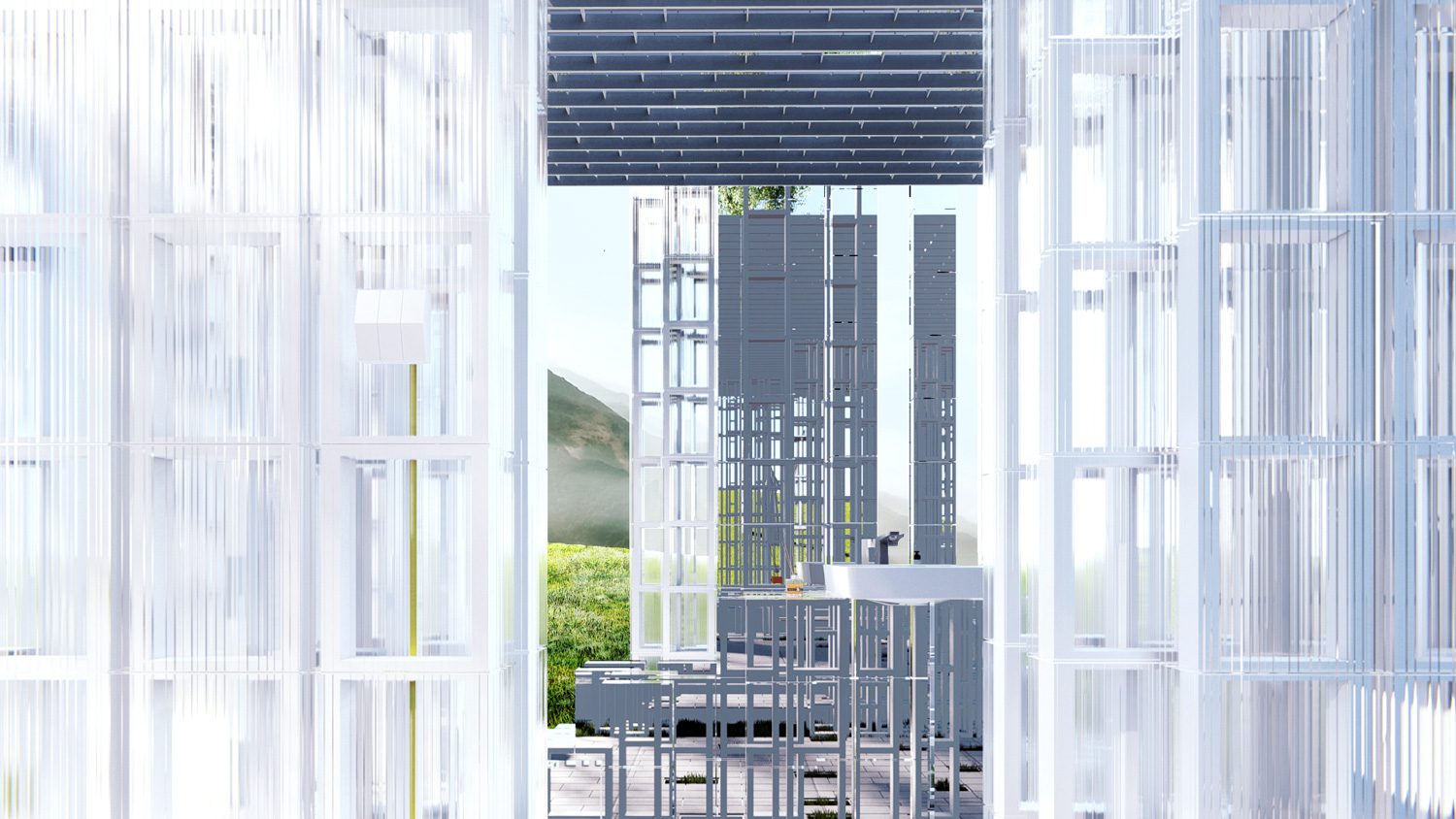
Let’s Nature In by Peerapon Suthimakphol l Photo courtesy of ASDA 2022
“The pandemic has made it clearer now that the existing works of architecture cannot fully accommodate humans’ changing lifestyles,” said Peerapon. “That’s why I started questioning whether the enclosed bathroom space would still be an appropriate alternative, and that led to the design of this open bathroom that welcomes in natural light to help sanitize the space, with fresh air flowing through, allowing these natural elements to be in contact with our bodies and help sterilize the space without the need for everything to be cleaned and washed with chemicals all the time.”
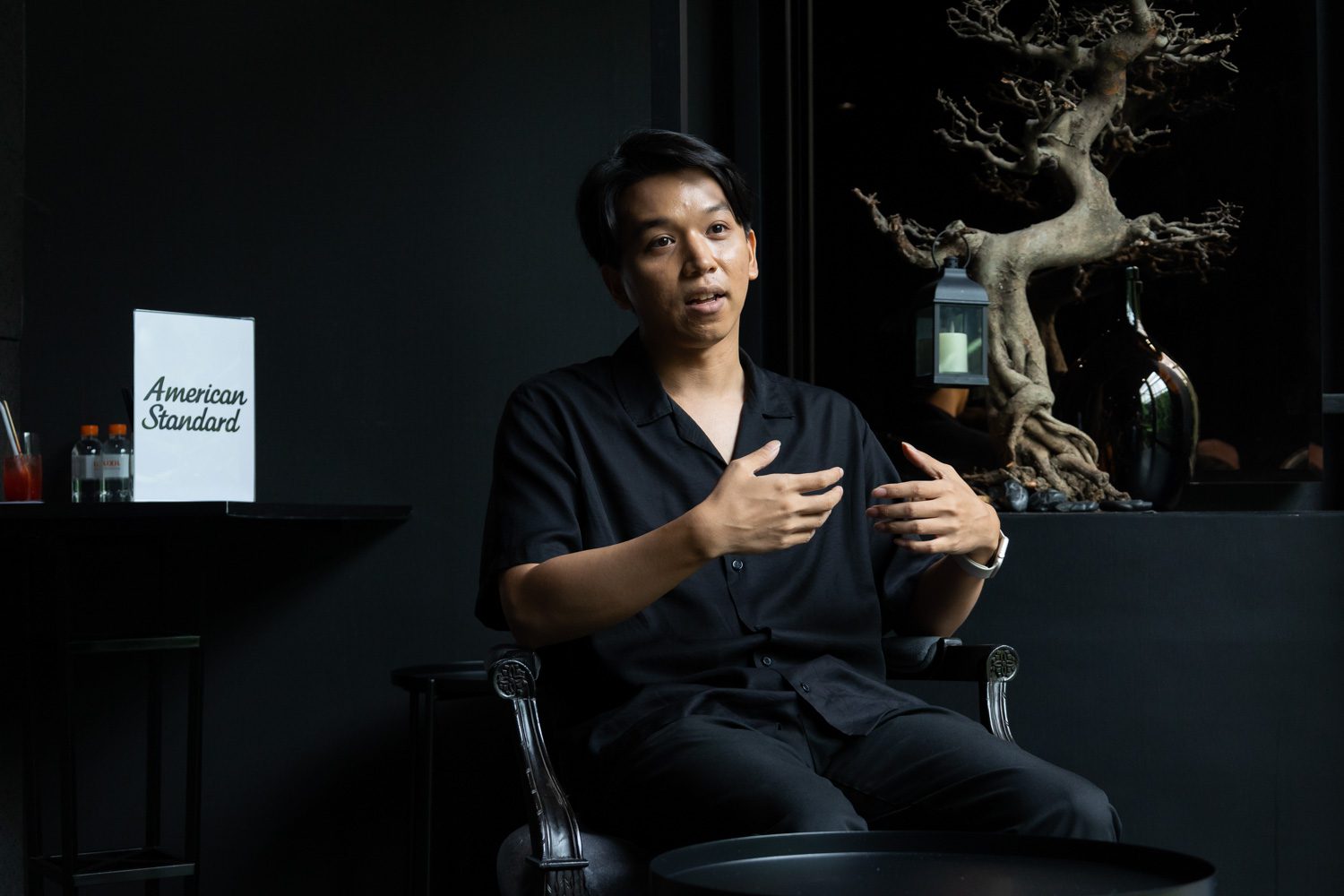
Peerapon Suthimakphol l Photo: Don Amatayakul
‘The Emulsion: Definitions for Borrowable Space’
The winner of Residential Bathroom Space Design (Design Professionals and Practitioners) : Kan Laohavanich

The Emulsion: Definitions for Borrowable space by Kan Laohavanich l Photo courtesy of ASDA 2022
Condominium units get smaller by the day, as rooms inside this particular type of living space are being used in various ways, beyond what their name imply. A living space becomes a working and dining area, and is physically connected to other parts of the living unit such as bedrooms. Kan Laohavanich questions how a bathroom space carries other functions and connects to other living spaces through his design, “The Emulsion Definitions for Borrowable Space.”
Kan demolishes the walls that enclose the bathroom to create a more open bathroom space, adding an extra functional area to a small condominium unit. The bathroom’s layout locates the bath at the center with the toilet and wash basin surrounding the axis. The toilet faces the enclosed side of the space for greater privacy while the washbasin is connected to the main living space where dwellers spend most of the time in, reminding everyone to maintain their hygiene. The ceiling and floor are designed to be a superimposed unit, effortlessly enabling inhabitants to adjust the components to suit their preferred level of privacy or create a new mood for the living space.
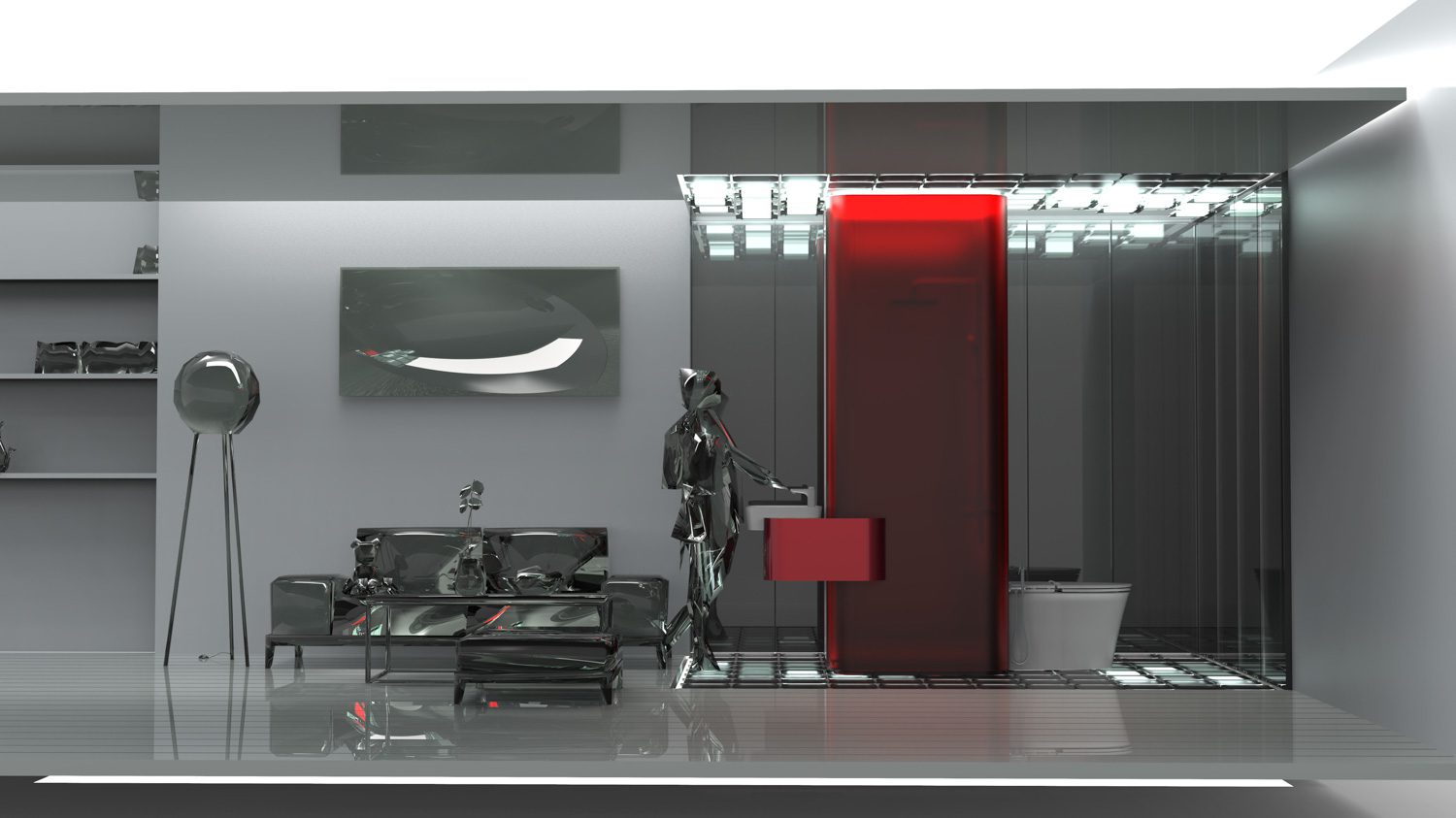
The Emulsion: Definitions for Borrowable space by Kan Laohavanich l Photo courtesy of ASDA 2022
“I view the privacy of a bathroom space as a familiarity that can change according to how the space is used. And as a designer, want to propose the concept of how this space can improve the life of a user despite it being deviated from what most people in a society are familiar with,” Kan explains the idea behind the design.

The Emulsion: Definitions for Borrowable space by Kan Laohavanich l Photo courtesy of ASDA 2022
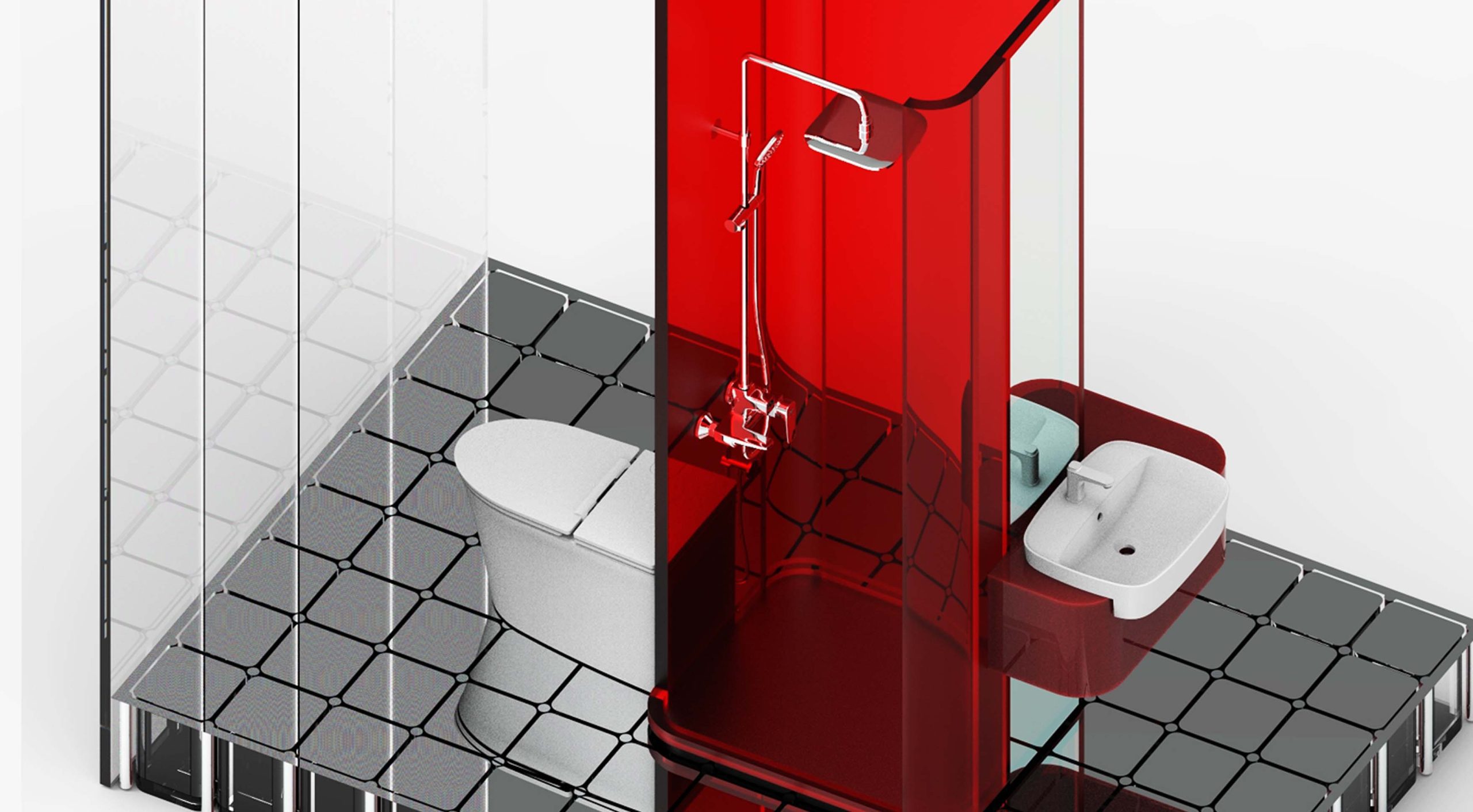
The Emulsion: Definitions for Borrowable space by Kan Laohavanich l Photo courtesy of ASDA 2022
All the ideas from these young designers are equally interesting and correspond with how fast the world changes. While the competition is over, the plan for next year’s American Standard Design Award is already underway, and it’s definitely worth following what fresh, creative ideas and innovations next year’s ASDA will bring.

